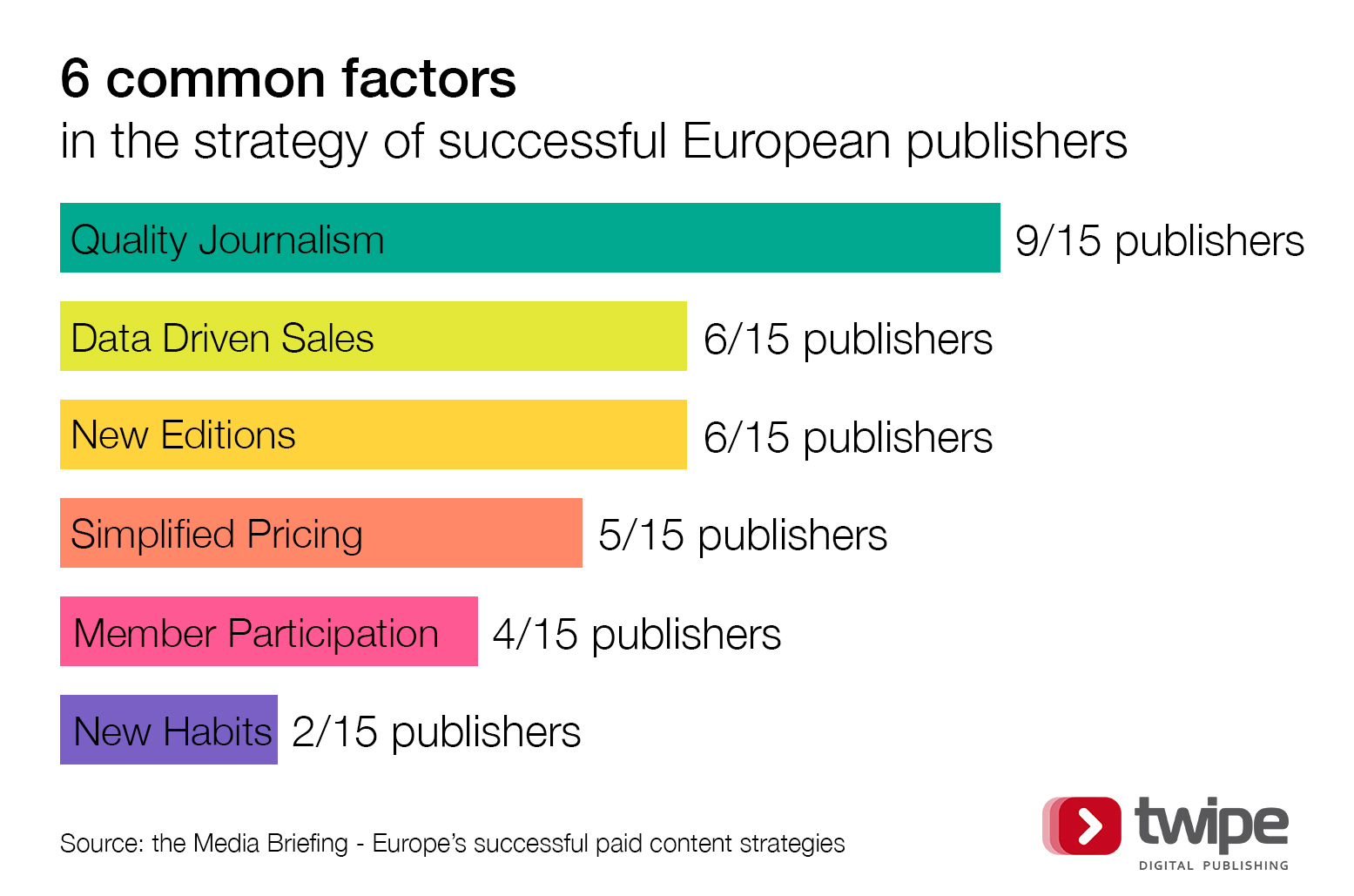The Media Briefing released a report last week containing 15 Case Studies of European publishers who have successfully implemented paid content strategies. We did a careful analysis of the report and identified the 6 common factors that industry leaders such as BILD, The Economist, De Correspondent, SüdDeutsche Zeitung, The Times or Le Monde counted on when building up direct reader revenue.

- Focus on Quality Journalism: most publishers focus on bringing high quality journalism to their readers. The Times is one of the only newspaper publishers in the world that does not offer any free content anymore. Having the whole organization focused on a single goal of producing and monetizing paid content, has been a good recipe for digital growth.
- Data Driven Sales Conversion: publishers like Aftenposten and VG have built skill and competence in converting their free visitors into paid subscribers. In revenue generation, NZZ (Neue Züricher Zeitung) has focused on a free to paid conversion strategy. It is moving to a system of real-time, automated marketing actions based on detailed usage and behavioral profiles.
- New & Adapted Digital Daily Editions: The Economist (with Espresso) and Le Monde (with La Matinale) have develop new target digital products, targeting the mobile “Daily Briefers” in a much better way.
- Simplified Price Offerings: Leading German tabloid focuses paid offering on just two price points in bid to exploit reach of 20,000,000 in free content. The simplification of the offering has had a clear effect; as of the end of 2016, the number of digital subscribers to BILD+ had increased by about 30,000 on the previous year, a growth rate of around 10%.
- Active Member Participation: Pureplayers like De Correspondent (NL) or Mediapart (FR) call their subscribers members, and built upon their participation to enrich the entire offer. As explained by Ernst-Jan Pfauth, co-founder & publisher of De Correspondent: “If you call someone a subscriber it suggests that they are a passive consumer who just pays for stuff, reads it, and that’s it. We really want an active relationship with our readers. That’s why we call them members.”
- Build New Habits: John Ridding, The CEO of The Financial Times, argues to create new habits for their digital editions. “It’s all about recreating the connection and the habit that people used to have in the print world.”
Discover our SaaS digital publishing and analytics solutions which help publishers to engage more readers on mobile devices and monetize premium content:
- EngageReaders helps newsrooms to understand their readers and to improve the content and composition of their editions on a continuous basis.
- NextGen Publishing offers the most immersive reading experience on mobile devices for your epaper or your new daily digital edition.
